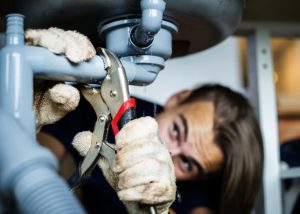How to Check If Your Residence Has a Surprise Leakage
How to Check If Your Residence Has a Surprise Leakage
Blog Article
We have stumbled upon the article on Top leak detection hacks directly below on the web and decided it made sense to discuss it with you over here.

Early discovery of dripping water lines can alleviate a potential calamity. Some little water leaks might not be visible.
1. Check Out the Water Meter
Checking it is a surefire way that helps you discover leaks. If it moves, that shows a fast-moving leakage. This means you might have a slow leak that could even be underground.
2. Check Water Usage
Examine your water costs and also track your water consumption. As the one paying it, you should observe if there are any kind of discrepancies. If you detect sudden changes, regardless of your usage coinciding, it suggests that you have leakages in your plumbing system. Keep in mind, your water expense need to fall under the same variety on a monthly basis. A sudden spike in your bill shows a fast-moving leakage.
A stable boost every month, even with the very same habits, reveals you have a slow leak that's additionally slowly escalating. Call a plumber to completely examine your residential or commercial property, particularly if you really feel a warm location on your flooring with piping underneath.
3. Do a Food Coloring Examination
When it concerns water usage, 30% originates from commodes. Test to see if they are running appropriately. Decline flecks of food shade in the container as well as wait 10 mins. If the color somehow infiltrates your dish throughout that time without flushing, there's a leakage in between the storage tank and also dish.
4. Asses Exterior Lines
Do not fail to remember to examine your outdoor water lines as well. Must water seep out of the link, you have a loosened rubber gasket. One small leakage can throw away loads of water as well as increase your water bill.
5. Evaluate and Analyze the Scenario
Homeowners ought to make it a routine to inspect under the sink counters and even inside cabinets for any kind of bad odor or mold and mildew growth. These 2 warnings show a leakage so prompt focus is needed. Doing regular assessments, also bi-annually, can save you from a significant issue.
Much more significantly, if you recognize your house is currently old, maintain a watchful eye on your heating units, pipes, pipelines etc. Look for stainings as well as weakening as most pipelines and devices have a life expectancy. They will certainly likewise normally degrade due to deterioration. Do not wait for it to rise if you think dripping water lines in your plumbing system. Call a professional plumber today so you do not wind up with an awful mess in your home.
Early detection of dripping water lines can mitigate a prospective disaster. Some small water leakages may not be noticeable. Checking it is a proven way that assists you discover leakages. One small leak can squander bunches of water and spike your water bill.
If you presume dripping water lines in your plumbing system, do not wait for it to intensify.
WARNING SIGNS OF WATER LEAKAGE BEHIND THE WALL
PERSISTENT MUSTY ODORS
As water slowly drips from a leaky pipe inside the wall, flooring and sheetrock stay damp and develop an odor similar to wet cardboard. It generates a musty smell that can help you find hidden leaks.
MOLD IN UNUSUAL AREAS
Mold usually grows in wet areas like kitchens, baths and laundry rooms. If you spot the stuff on walls or baseboards in other rooms of the house, it’s a good indicator of undetected water leaks.
STAINS THAT GROW
When mold thrives around a leaky pipe, it sometimes takes hold on the inside surface of the affected wall. A growing stain on otherwise clean sheetrock is often your sign of a hidden plumbing problem.
PEELING OR BUBBLING WALLPAPER / PAINT
This clue is easy to miss in rooms that don’t get much use. When you see wallpaper separating along seams or paint bubbling or flaking off the wall, blame sheetrock that stays wet because of an undetected leak.
BUCKLED CEILINGS AND STAINED FLOORS
If ceilings or floors in bathrooms, kitchens or laundry areas develop structural problems, don’t rule out constant damp inside the walls. Wet sheetrock can affect adjacent framing, flooring and ceilings.
https://www.servicemasterbyzaba.com/blog/how-to-detect-water-leakage-in-walls/

As a passionate reader about Finding hidden leaks, I figured sharing that excerpt was really useful. Liked our write up? Please share it. Help someone else check it out. Thank you for taking the time to read it.
Report this page